Mike St-Jean On The Geometry Of Light
Posted on April 2, 2019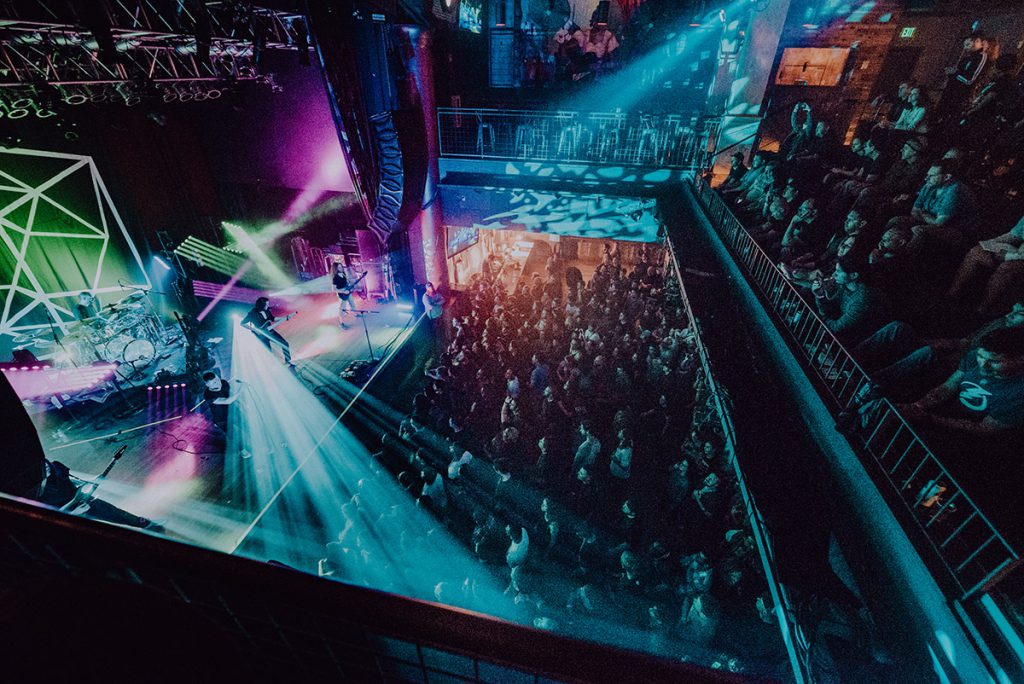
Photo: Randy Edwards
Geometry has been described as a “meditation on the harmony of the cosmic order.” Looking at Mike St-Jean’s lighting and production design for the British progressive metal band TesseracT, we couldn’t help but recall this quote from long ago. Arranging an assortment of linear fixtures in angular patterns, St-Jean not only added depth and texture to the stage, he also endowed it with a kind of abstract equilibrium that provided a perfect balance to his client’s atmospheric music.
Getting to know St-Jean, we came to appreciate the role that “geometric thinking” plays in his design philosophy. For him, lighting should not only reflect music with its color and brightness, but also tell a deeper story in its shapes and patterns. Under this approach, lighting sculpts the stage as well as illuminates it.
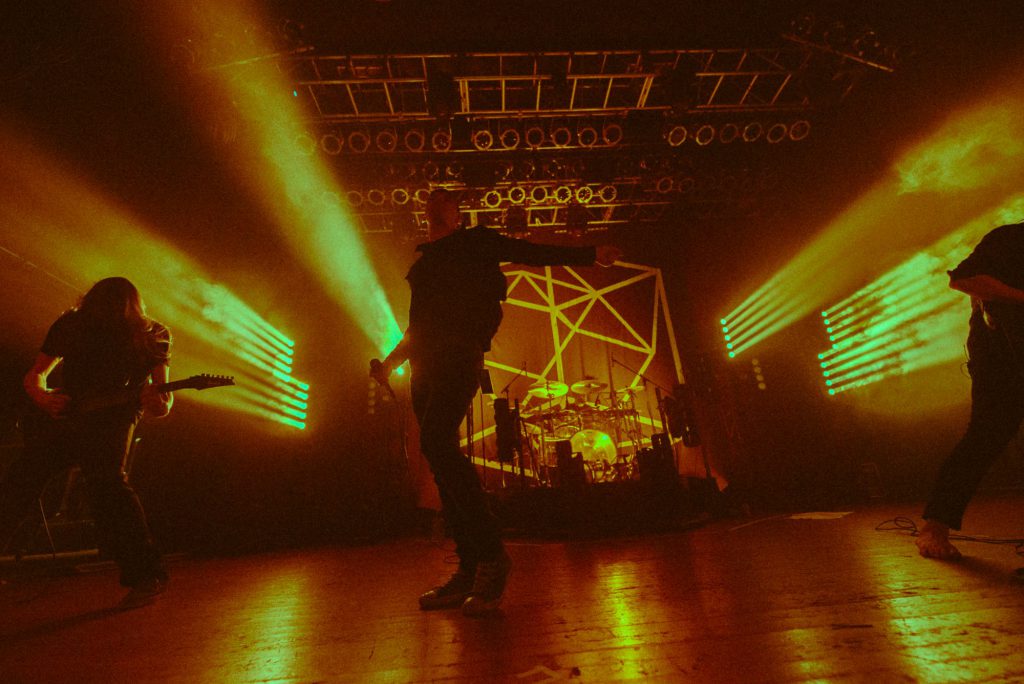
Photo: Randy Edwards
Taking time from his touring schedule, St-Jean spoke to us about the geometric power of light.
What are the biggest advantages of lighting your client’s performance with geometric designs?
“Lighting with geometry in mind is a great way to build out looks for reference later in the programming workflow. While I am working out a design, before getting into too much of the specifics of the songs, I will build a bunch of looks that start to cover the range of emotions and energy that we will want to convey. I can reference and pull from these later on when programming.”
Looking at your work for TesseracT it struck us that you use lighting not only to illuminate the stage, but to shape it, creating a sense of architecture that divides it up into sections. Can you discuss your approach to shaping the stage with light?
“Ultimately shaping the stage is the entirety of what we as designers achieve with light. With a pin-spot focus on a single subject, the audience is floating in a vast abyss, the only other presence is the lit performer. Add the audience blinders, and the reality of the venue, the crooks and corners, ceiling and floor, all come back into play. In between there is every opportunity to ground the viewer in the present, place and time, with the band, or allow for a release to the transcendent- beyond the reality of the venue, and into the artist’s vision and journey. Also, we all enjoy the aesthetics of a ‘cool look,’ and presenting the audience with consonant and dissonant geometrics of light is another way to play with emotions.”
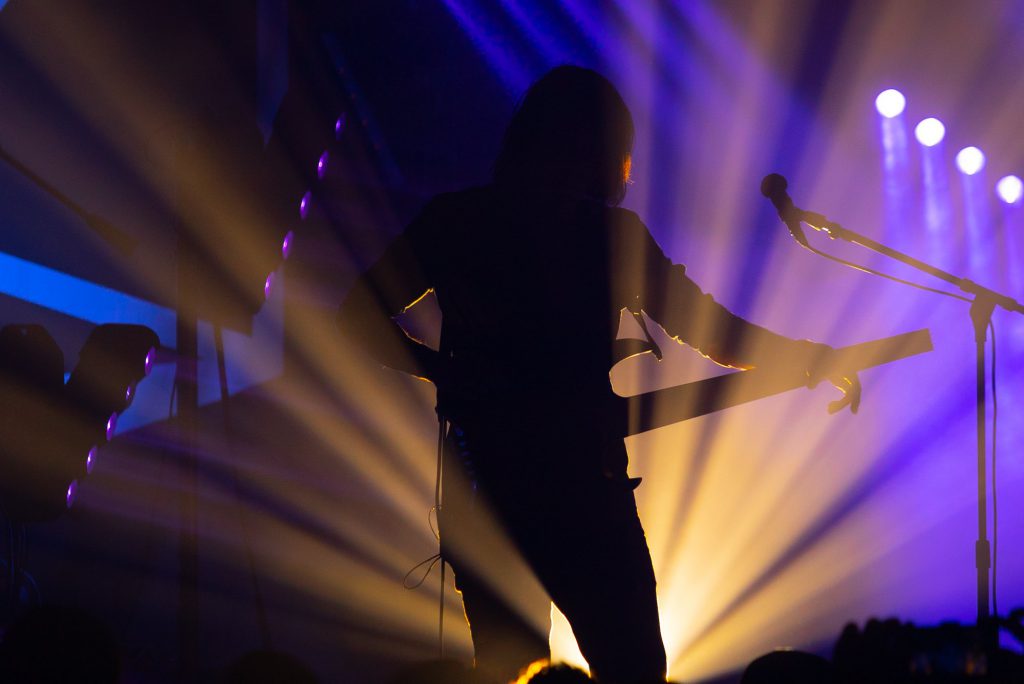
Photo: Randy Edwards
Sometimes you aim linear fixtures in different directions. What is the advantage of that?
“The most profound result of directing light, I find, is the control of the perception of space. With all fixtures pointing in towards the artists, a claustrophobic, controlled, or comfortable mood can be derived. Pointing fixtures outwards, into the venue, towards the ceiling, balconies, etc., promotes an open experience – freedom, grandeur, infinitude. It again plays with the ideas of consonant and dissonant aesthetic, which in turn plays with the audience’s comfort and energy levels.”
What role does variations in lightness and darkness play in creating a geometric design?
“Within geometric considerations, fixture intensity plays a role in layering, focus, and the resultant look of a design. Simply by alternating the intensity of different layers, a designer can create new looks and add movement and momentum to an otherwise singular design.”
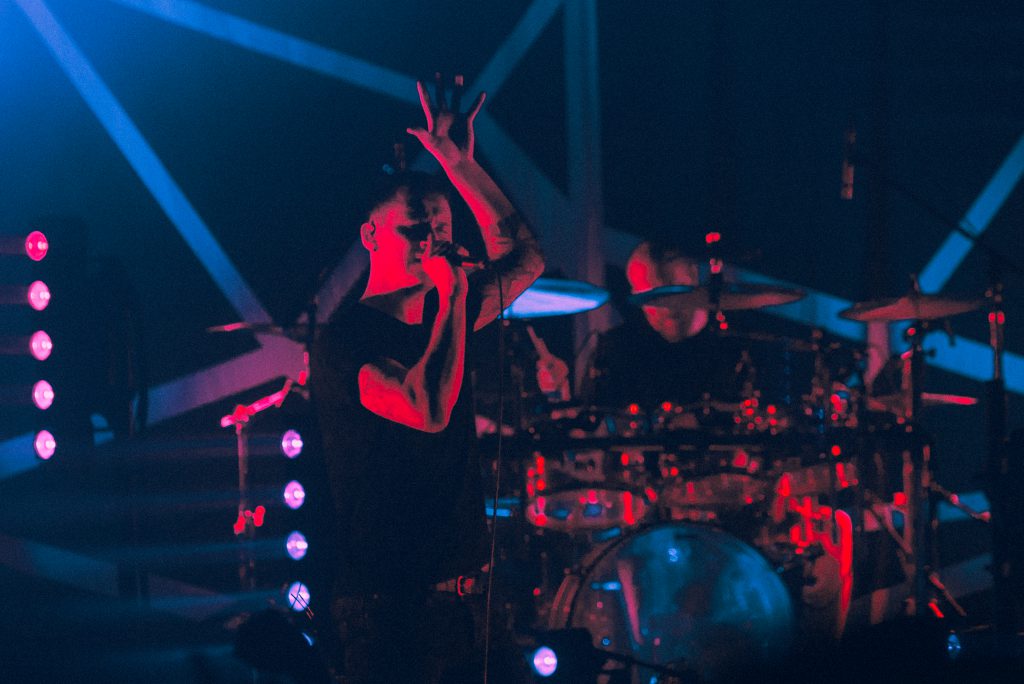
Photo: Randy Edwards
Can you blur the geometric pattern if the output of your lights is too great?
“On the contrary, I find that when the focus is on the geometric patterns, more intensity gets the vision across. The main issue I encountered with some fixtures is that they are sometimes too bright. When in any basic position, straight on to the audience – the intensity of these fixtures overpowers every other element on stage. To resolve this, I bring the intensity way down any time the fixtures are facing straight at the audience for extended periods, then I bring the intensity up more when they are pointing off to the ceiling and floor, away from the audience.”
You also have positioned linear fixtures at different heights. How does this contribute to the geometry of your designs?
“Place fixtures at different heights, of course! We are always striving to create layers, depth, and interest in a design so, in a sense to hang everything from the same height or base the same level from the floor, reduces these options. That being said, when deciding on heights, I am aware of attempting to find overlap, in order that the many layers share and depart from the same lines.”
How does using video panels affect a geometric design? Is there a danger of the patterns on the video conflicting with the patterns of your light?
“Video offers a great way to augment lighting patterns and vice versa. I am taking care at all times to consider both lighting and video. As is true with everything, there is the opportunity to empower the artistic vision with the right choices, and confuse the aesthetics with the wrong ones. Including video panels adds another layer to consider, but creates an even more immersive effect when it is all done properly.”
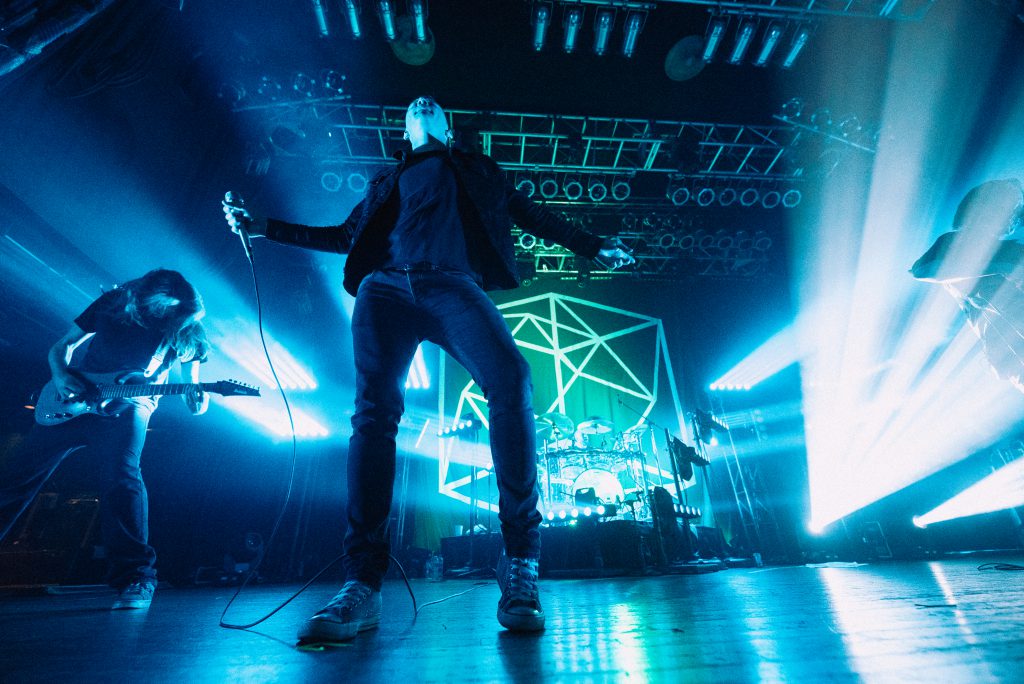
Photo: Randy Edwards
How about moving linear fixtures in your geometric designs? Does that present any special challenges?
“If it suits the style and vision, then ultimately they are a great tool. The obvious constraint is that each group of light sources follows a different set of rules than if they were all individual fixtures – placement, pan/tilt. Otherwise they are a great focus or addition to a design, and these ‘constraints’ really just add to the scope of designing and programming for that particular project. Every project has its limitations.”
Do you always use linear fixtures in your designs to create geometric patterns, or are there projects where you feel it’s better not to use these fixtures?
“I approach each project with the intent of producing the best possible result for the client’s vision. For example, with the TesseracT design, I thought immediately of linear fixtures as a potential tool, because of the geometric connotations derived from the band’s name, and the often-angular aesthetic of their music.”
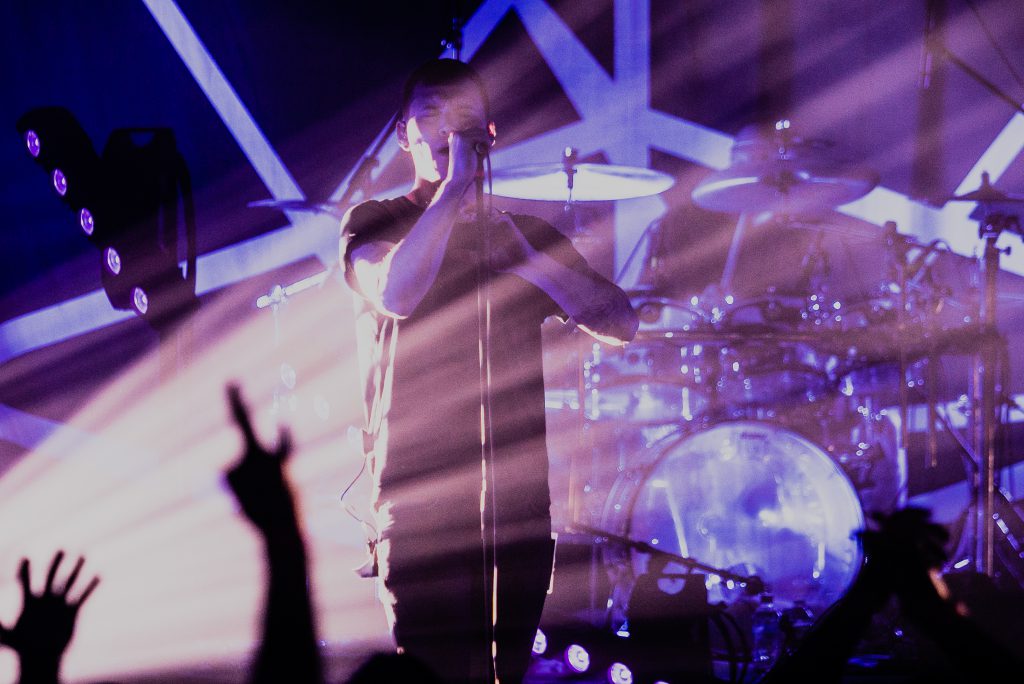
Photo: Randy Edwards
Are there any other challenges to be aware of when creating geometric designs?
“I find a lack of symmetry will be more obvious when creating intentionally symmetrical looks – I spend more time fine-tuning positions every day for this style of design. As well, not letting the choices of shapes and looks detract from letting the music direct the appropriate moment to use any given scene, is an important consideration. Finally, try not to repeat myself, and building the arc of the show in a way that reveals the capabilities of the rig and growing the energy throughout the night with the flow of the set list. This is however, a universal consideration regardless.”